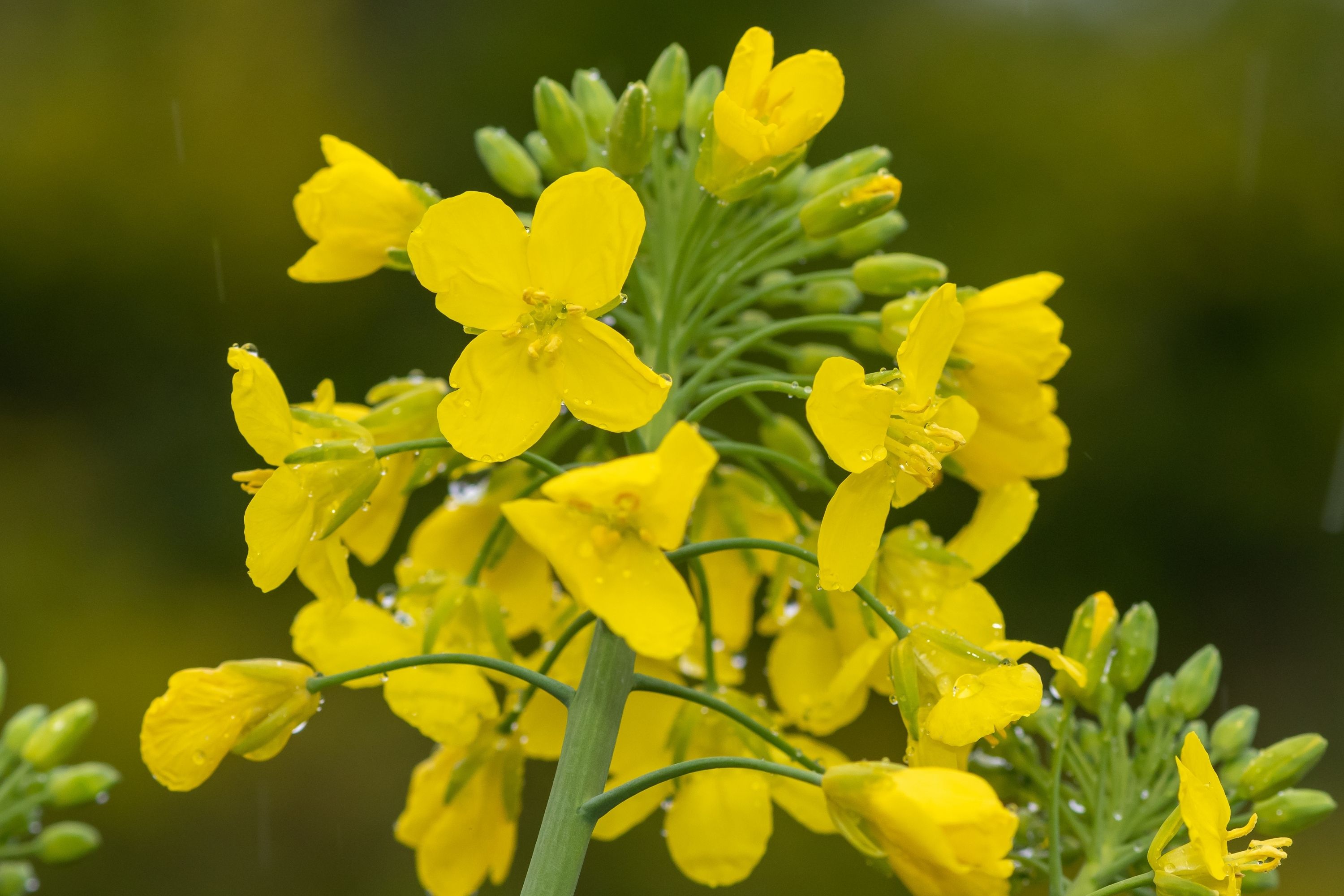Rapeseed
(Brassica napus)

Description
Brassica napus, commonly known as rapeseed, is a species of flowering plant in the Brassicaceae family. It is a globally important oilseed crop that is grown primarily for its oil-rich seeds, which are used in the production of cooking oil, biodiesel, and animal feed. Taxonomy and Classification Brassica napus is a member of the Brassicaceae family, which is also known as the mustard family. Within this family, it is classified under the tribe Brassiceae, which also includes other important crops such as broccoli, cauliflower, cabbage, and mustard. The species is known to have originated from the hybridization of two other Brassica species, Brassica rapa and Brassica oleracea. The resulting hybridization event occurred thousands of years ago and gave rise to three different subspecies of Brassica napus, namely: Spring oilseed rape (B. napus subsp. oleifera): This subspecies is grown in temperate regions as an annual crop for its oil-rich seeds, which are used in cooking oil, biodiesel, and animal feed. Winter oilseed rape (B. napus subsp. napus): This subspecies is also grown as an annual crop, but it is sown in the autumn and harvested in the summer of the following year. It is primarily grown in regions with milder winters. Swede or rutabaga (B. napus subsp. rapifera): This subspecies is grown as a root vegetable and is consumed by humans and livestock alike. Distribution and Habitat Brassica napus is a widely cultivated crop that is grown in many parts of the world, including Europe, North America, and Asia. It is believed to have originated in Europe and Asia, but its cultivation has spread to other continents over the centuries. The plant thrives in temperate regions with cool summers and mild winters. It prefers well-drained soils with a pH between 6.0 and 7.5 and requires ample sunlight and water to grow optimally. Morphology and Anatomy Brassica napus is an annual or biennial plant that can grow up to 1-2 meters in height. It has a deep taproot that can extend up to 1.5 meters into the soil, which helps it to absorb nutrients and water efficiently. The leaves of the plant are alternate and deeply lobed, with a bluish-green color. The flowers are yellow and arranged in a raceme, with each flower measuring about 1-2 cm in diameter. The plant is self-fertile and can produce seeds without the need for cross-pollination. The seeds of Brassica napus are small and round, with a diameter of about 1-2 mm. They are brownish-black in color and have a high oil content of up to 50% by weight. Cultivation and Harvesting Brassica napus is primarily grown as an annual crop, although some cultivars can be grown as biennials. The crop is sown in the spring or autumn, depending on the subspecies and the climatic conditions in the region. The plants require ample sunlight and water to grow optimally and need to be fertilized with nitrogen, phosphorus, and potassium to promote healthy growth. Weeds, pests, and diseases can also pose a threat to the crop and need to be controlled through various management practices. The crop is harvested when the seeds have matured and turned brownish-black in color. The seeds are harvested using a combine harvester and are then dried and cleaned before being used for oil extraction, biodiesel production, or animal feed.
Taxonomic tree:







